Architecture software is pivotal in aiding architects and designers to realize their creative visions efficiently. These tools offer a range of functionalities, from basic drafting to advanced 3D modeling and photorealistic rendering. They enable professionals to create detailed designs, visualize concepts, and collaborate effectively with clients and teams. The best software for architects and designers depends on specific project requirements, personal preferences, and the scale of operations. For architects, software like AutoCAD, Revit, and ArchiCAD are often considered top choices. AutoCAD is known for its precision in 2D and 3D drafting, making it a standard in the industry. Revit, with its BIM (Building Information Modeling) capabilities, allows architects to create intelligent models, enhancing the efficiency of the design and construction process. ArchiCAD, another BIM tool, is praised for its user-friendly interface and collaboration features. Designers might gravitate towards software like Photoshop, SketchUp, and Rhinoceros 3D. Photoshop is a leading tool for image editing and graphic design, enabling designers to create detailed visualizations and manipulate images. SketchUp is favored for its ease of use and intuitive 3D modeling capabilities, which are suitable for both beginners and experienced users. Rhinoceros 3D offers versatility in handling complex models, making it ideal for designers who work on intricate forms. The landscape of architecture software is vast, with numerous options catering to various aspects of architectural and design work. Each software brings unique strengths to the table, making the choice highly dependent on the particular needs and workflow of the professional.
- Photoshop: Adobe Photoshop, developed by Adobe Systems, is the best overall raster graphics editor. Launched in 1987 by Thomas and John Knoll, it has become the industry standard for graphic design and image manipulation. It offers pixel-based editing in multiple layers and advanced features like non-destructive editing and compositing. Architects and designers extensively use Photoshop to modify images, integrate them into workflows, and enhance architectural renderings.
- SketchUp: SketchUp, a top choice for architects, is the best overall 3D design software developed by Trimble Inc. Acquired from Google in 2012, it has become crucial in architecture and construction. SketchUp offers tools for 3D modeling, 2D drawings, and construction documents. The software’s user-friendly interface and extensive capabilities make it popular among architects, designers, and engineers.
- AutoCAD: AutoCAD, by Autodesk, is the best overall software for designers in 2D and 3D computer-aided design (CAD). The software enables precise 2D and 3D model creation and drafting of construction documentation. AutoCAD’s comprehensive features, such as designing with exact coordinates and area calculations, and its support for web and mobile applications make it valuable for designers’ and architects’ inefficient project communication and documentation.
- SOLIDWORKS: SOLIDWORKS, developed by Dassault Systèmes, is considered the best overall in CAD and CAE software. Engineers and designers use it globally to provide documentation for parts, assemblies, and drawings. It offers tools for engineering tasks like stress analysis and has licensing options catering to different needs. Architects and designers find SOLIDWORKS helpful for 3D modeling, visualization, and collaboration.
- 3ds Max: Autodesk 3ds Max, a professional 3D graphics program, is the best overall animations, models, and images. 3ds Max is essential in architectural visualization and is used by architects to create detailed 3D models and animations. 3ds Max offers various licensing options and supports output formats like FBX and OBJ. Its advantages include high-quality rendering and a user-friendly interface, making it a valuable asset for designers in visualization projects.
1. Photoshop
Adobe Photoshop, developed by Adobe Systems, is a raster graphics editor widely recognized as the industry standard for image manipulation and graphic design. Created in 1987 by Thomas and John Knoll, Adobe licensed it in 1988. Photoshop facilitates photo retouching, image editing, graphic and web design, digital painting, and more. The Photoshop family encompasses Photoshop CC, Photoshop Elements, and apps like Photoshop Camera. Photoshop CC, part of Adobe’s Creative Cloud, offers cloud storage and multi-device functionality.
Adobe Photoshop runs on Windows and macOS. Windows system requirements include the 64-bit version of Windows 10 (version 1809 or later), while macOS users need version 10.14 (Mojave) or newer. Hardware demands include a 64-bit Intel or AMD processor, at least 8GB of RAM, 4GB free HDD space, a DirectX 12 capable GPU with 2GB memory, and 1280×800 screen resolution. Photoshop’s licensing is subscription-based, with no option for a one-time purchase. Individual app subscriptions cost $22.04 (€19.50, £16.50) monthly. The Creative Cloud Photography plan, including Photoshop, Lightroom, and 20GB of cloud storage, costs $9.99 (€8.80, £7.50) monthly.

Adobe Photoshop also offers Creative Cloud for Teams and educational institution plans. Photoshop Elements, a simpler version, is available for a one-time purchase. Photoshop assists architects and designers with image modification, enhancement, and workflow integration. Photoshop supports material, texture, and lighting simulation, integrating well with other design software. Photoshop outputs primarily in raster formats, with its native PSD format supporting multiple layers, transparency, and various color spaces. It exports images in JPEG, PNG, GIF, TIFF, and other standard bitmap formats, and it also offers vector graphics export in SVG, PDF, and EPS formats. Photoshop also supports 3D images and essential video file export.
The advantages of Photoshop include its robust editing tools, industry-standard status, high-quality image output, extensive file format support, and automation features. Disadvantages include a steep learning curve, the expense of its subscription model, hardware demands, limited batch editing capabilities, and occasional stability issues. Customer reviews praise Photoshop’s advanced features, color correction, dynamic brush engine, and type tools. Criticisms focus on the learning curve and subscription cost. ArchitectureLab recommends Photoshop for architects, citing its versatility and importance in creating renderings and visualizations, marking it essential in architecture.
2. SketchUp
SketchUp is a 3D design software widely recognized in architecture and construction. It offers tools for 3D modeling and 2D drawings, aiding the design-build process. SketchUp’s accuracy ensures all project members have the necessary information. Features for design presentation include animations, images, videos, photorealistic renderings, cost estimates, and cutlists. Developed by Trimble Inc., SketchUp was acquired from Google in 2012. SketchUp runs on Windows and macOS. The latest SketchUp Pro 2023 supports Windows 10 and 11. A browser-based web app version, SketchUp Modeler, offers interactive 3D model viewing on Chrome, Safari, and Firefox.
Mac users can run SketchUp using virtualization software like Parallels or VMware Fusion. SketchUp Viewer, an iPad app, focuses on mobile 3D model viewing. Launched in August 2000 by @Last Software, SketchUp was first developed for architects, designers, and filmmakers. SketchUp offers various licensing options. Individual Pro licenses start at $270 (€240, £215) annually, with a monthly option at $30 (€30, £25). Educational licenses are available for teachers and students at $50 (€45, £40). Enterprise licensing offers higher support levels and volume discounts. SketchUp aids architects and designers with its ease of use, flexibility, and powerful tools. Output formats include SKP for 3D models, 2D formats like DWG, DXF, PDF, and EPS, and . CSV for reports. Animations, images, and videos can be exported in formats like MP4 and JPG.

The advantages of SketchUp include its intuitive interface, rapid conceptual modeling, design communication, site context integration, third-party extensions, and affordable pricing. Disadvantages are limited advanced modeling tools, rendering and material limitations, lack of parametric modeling, minimal BIM support, interoperability issues, and performance lags in complex scenes.
Customer reviews praise SketchUp’s intuitive modeling and balance between precision and simplicity. Recent upgrades have enhanced visualization capabilities. ArchitectureLab recommends SketchUp for architects due to its user-friendly interface, robust modeling and drawing capabilities, 2D communication, presentation tools, and speed in design visualization. SketchUp Pro 2022 offers features for various applications, including architectural and interior design, making it a valuable tool for professionals.
3. AutoCAD
AutoCAD, developed by Autodesk, is a leading 2D and 3D computer-aided design (CAD) software application. First launched in December 1982 by Autodesk at the COMDEX trade show, AutoCAD 1.0 marked a significant advancement in digital design, replacing manual drafting with a more efficient, accurate digital platform. AutoCAD enables efficient creation of precise 2D and 3D models, surpassing traditional hand-drawing methods. AutoCAD runs on multiple platforms as a full-featured desktop application compatible with Windows and macOS. It supports various Windows versions, including Windows 10 and 11, and macOS versions like Big Sur.

AutoCAD’s licensing models cater to individuals, enterprises, and educational institutions. Individuals can access specialized tools starting at $210 (€189, £167) monthly, with team pricing beginning at $440 (€395, £350) for up to three users. The cost for individuals starts at $210 (€189, £167) monthly, with additional savings for 1-year and 3-year prepaid options. AutoCAD assists architects and designers with its ease of use, powerful tools, and customization options. Its precision in 2D and 3D modeling minimizes errors, while parametric modeling capabilities enable experimentation with design concepts. Collaboration features in AutoCAD improve communication among project parties, and pre-built objects like walls and doors increase productivity. Advanced 3D modeling capabilities allow for photorealistic renderings, which are valuable in marketing architectural projects. AutoCAD outputs in formats like DWG for 2D CAD drawings and 3D models, with extensive export abilities in 2D and 3D formats, ensuring compatibility with various software.
The advantages of AutoCAD include enhanced precision, increased efficiency through automation, seamless collaboration, powerful 3D modeling, analysis and simulation capabilities, and customization. It also presents disadvantages like a steep learning curve, expensive licensing, potential compatibility issues, hardware intensity, limited customization on web/mobile platforms, and occasional stability issues. ArchitectureLab recommends AutoCAD for architects, emphasizing its versatility, compatibility with other tools, comprehensive features, integration with cloud services and BIM tools, and robust support.
4. SOLIDWORKS
SOLIDWORKS, developed by Dassault Systèmes, is a premier CAD and CAE software that millions of engineers and designers use globally. It includes three document types: parts, assemblies, and drawings. Founded in 1993 by Jon Hirschtick, SOLIDWORKS was acquired by Dassault Systèmes in 1997. It operates as a subsidiary, maintaining its brand identity and continuing innovation in CAD software. SOLIDWORKS mainly runs on Windows, supporting various versions, including Windows 10 and 11. It can operate on Apple Mac machines using virtualization software, though not officially supported by the developer. SOLIDWORKS accommodates virtual environments like VMware vSphere ESXi and Microsoft Hyper-V.

The cost of SOLIDWORKS varies based on license type. Standalone Licenses start at $3,995 (€3,495, £2,995), with annual subscription fees for updates. Network Licenses are priced higher, reflecting their multi-user capability. Short-term Rental Licenses and Academic Licenses are available at lower costs. SOLIDWORKS aids architects and designers in 3D modeling, visualization, and collaboration. SOLIDWORKS also provides advanced simulation, analysis, and rendering tools for comprehensive design evaluation. Its output formats include SLDPRT and SLDASM for native 3D models, and it supports 2D drawings in PDF and DWG formats. Standard CAD exchange formats like STEP and IGES are also supported.
Advantages of SOLIDWORKS include enhanced visualization, streamlined collaboration, parametric design efficiency, analysis and simulation capabilities, and support for downstream functions. It has limitations in 2D drafting, a steep learning curve, lacks built-in BIM support, presents collaboration challenges, can be expensive, and is Windows-only. Customer reviews praise SOLIDWORKS for its intuitive modeling, community resources, and interoperability while noting challenges with large assemblies and costs. ArchitectureLab recommends SOLIDWORKS as a comprehensive tool for product development and 3D design, highlighting its compatibility, generative design capabilities, and integration with other software and cloud services. This recommendation acknowledges SOLIDWORKS as a powerful tool for complex architectural projects, supported by its learning resources and community.
5. 3ds Max
Autodesk 3ds Max, initially 3D Studio and 3D Studio Max, is a professional 3D computer graphics program for 3D animations, models, games, and images. Developed by Autodesk Media and Entertainment, a division of Autodesk, Inc., it was released in April 1996. 3ds Max runs exclusively on Windows and is optimized for Windows 10 64-bit. It does not have native builds for Linux or macOS, but users can run it on these platforms using compatibility layers or virtual machine environments. The software was rebranded as 3ds Max in 2000 and later as Autodesk 3ds Max in 2006, and it has seen numerous updates, including 32- and 64-bit versions.
Licensing options for 3ds Max include standalone perpetual licenses, subscriptions, and rental plans. Endless permits cost $1,675 (€1,560, £1,340) with additional annual maintenance fees. Subscription plans are more flexible, starting at $185 (€173, £148) monthly or $1,970 (€1,840, £1,570) annually, offering access to the latest releases, updates, and support. Rental licenses, ideal for short-term needs, begin at $360 (€336, £287) monthly. 3ds Max aids architects and designers in modeling, visualization, and collaboration. 3ds Max supports various output formats, including FBX, OBJ, 3DS, IGES, and MAX files. It integrates with advanced renderers like Arnold to produce high-resolution images and supports standard imaging formats like JPG, PNG, TIFF, and MP4 for animations.

The advantages of 3ds Max include robust modeling capabilities, high-quality rendering, extensive plugin support, and a user-friendly interface. Its versatility and industry-standard status make it a valuable tool in various fields. Disadvantages include expensive licensing, a steep learning curve, limited animation tools, outdated physics, time-consuming rendering, and interface issues.
Customer reviews praise 3ds Max for its robust tools, high-quality rendering capabilities, and strong interoperability but note challenges with the interface and licensing model. ArchitectureLab recommends 3ds Max for its powerful modeling and rendering capabilities, collaboration features, and return on investment, making it a valuable asset for architects and visualization professionals. Users should be prepared for a significant learning curve and ongoing subscription costs.
6. FreeCAD
FreeCAD is a general-purpose parametric 3D CAD modeler and BIM software essential for mechanical engineering, architecture, and electrical engineering. As an open-source, free-to-use platform licensed under LGPL-2.0-or-later, it’s accessible on Linux, macOS, and Windows. Developed by a community of contributors rather than a single company, FreeCAD was started in 2001 by Jürgen Riegel. FreeCAD, which is compatible with Windows, macOS, and Linux, supports real-world object modeling in various engineering and architectural fields. Licensed under LGPL-2.0-or-later, FreeCAD supports multiple file formats and offers 2D drawing tools, Finite Element Analyses, and export options for 3D printing or CNC machining.
FreeCAD offers an LGPLv2+ license for unlimited use, distribution, modification, and incorporation into proprietary applications, maintaining open access to source code. FreeCAD is free, eliminating software license fees or subscription costs and making it accessible regardless of budget constraints. FreeCAD assists architects and designers with BIM capabilities, parametric modeling, customization, and cost-effectiveness. FreeCAD supports exporting 3D models and 2D drawings in various file formats, ensuring compatibility with other CAD software and applications like 3D printing and CAM. Standard export formats include STEP, IGES, STL, OBJ, DAE, PLY, SVG, and DWF.

Advantages of FreeCAD include its open-source and free nature, parametric modeling, customizability, community support, a wide range of CAD tools, and an easy-to-use interface. It has limitations in rendering and animation, stability and reliability issues, a steep learning curve, sparse official training resources, interface issues, and performance problems with large models.
User reviews and feedback are generally positive, highlighting FreeCAD’s full-featured capabilities, community support, and comparisons to commercial CAD tools. However, criticisms include a steep learning curve and manual construction compared to automated history-based CADs. ArchitectureLab recommends FreeCAD for its extensive drafting and modeling capabilities, noting its learning curve and basic built-in rendering capabilities. For detailed visualizations, users export to dedicated tools like Blender.
7. SmartDraw
SmartDraw is a comprehensive diagramming tool that integrates diagramming, whiteboarding, and data visualization. This tool integrates seamlessly with file storage systems and software like OneDrive, SharePoint, Google Drive, Microsoft Office, and Google Workspace, enhancing its utility in various professional settings. Developed by SmartDraw Software, LLC, based in The Woodlands, Texas, SmartDraw has become a crucial visual tool for many businesses, including over 85% of the Fortune 500. Its development, led by a team committed to enhancing collaboration and planning through visuals, has made SmartDraw a leading solution in diagramming and visual communication. The software’s web-based nature ensures compatibility across Windows, macOS, and Linux.
SmartDraw offers various licensing options, including individual, team, and site licenses. An individual permit costs $297 (€250, £220) per user, allowing installation on up to two devices. Team licenses start at $399 (€330, £290) per user for a 5-user subscription, with volume discounts available for larger teams. Site licensing, tailored for enterprise-wide access, starts at $3,995 (€3,300, £2,900), with costs varying based on organization size. SmartDraw benefits architects and designers by offering templates for architectural projects and integrating design and project management tools.

SmartDraw supports various output formats, including standard image formats for integration into documents, presentations, and websites and high-resolution formats for print production. Advantages of SmartDraw include ease of use, a wide range of templates and symbols, integration with other tools, collaboration features, and automation. It faces drawbacks like cost considerations, limited collaboration features compared to competitors, a complex interface for some users, performance issues, resource consumption, and fixed mobile support.
Customer reviews of SmartDraw are generally positive, highlighting its ease of use, time-saving features, and effective visual communication capabilities. Integrations like the Atlassian Confluence add-on are well-received for connecting diagrams directly into collaboration tools. ArchitectureLab recommends SmartDraw for its user-friendly interface, diverse templates, and robust integration capabilities, making it suitable for architects and designers involved in various project stages.
8. Planner 5D
Planner 5D is an architectural software for creating 2D and 3D floor plans and interior and landscape designs for homes and offices. This software allows users to switch between 2D and 3D views easily, apply custom colors, patterns, and materials, and generate high-definition renderings. It Is available on iOS, Android, and Mac, and also as a web version. Planner 5D is developed by Planner 5D LLC, headquartered in Vilnius, Lithuania. It was founded over ten years ago as a startup. Planner 5D runs on Windows, macOS, iOS, and Android as a cross-platform software, ensuring compatibility across devices and environments. Launched in 2015, it began as a project by Moscow-based startup Renomania and has since expanded to include mobile versions and macOS support.
Planner 5D offers pricing and licensing options, including a free version with essential features and paid plans for expanded capabilities. The 5D Plus plan, aimed at small businesses and professionals, costs $9.99 (€8.30, £7.20) monthly. The 5D Pro plan, suitable for freelancers and small agencies, is priced at $14.99 (€12.50, £10.90) monthly. More extensive commercial needs are met with the 5D Team plan at $39.99 (€33.25, £29.00) monthly and the 5D Business plan at $79.99 (€66.50, £58.00) monthly. These plans offer varying levels of cloud storage, collaboration tools, catalog access, and support features.

Outputs from Planner 5D include high-quality 3D visualizations in standard image formats like JPG, PNG, TIFF, and 2D floor plans in CAD formats like PDF, DXF, and DWG, enabling integration with other architectural design software. Advantages of Planner 5D include its intuitive interface, extensive object library, 2D and 3D design capabilities, cost-effectiveness, high-definition design support, and cross-platform availability. Its limitations include restricted free features, a learning curve for advanced techniques, occasional glitches, resource-intensive web versions, and potential customer service issues.
User reviews rate Planner 5D highly for its accessibility and user-friendly design but note minor bugs and a desire for expanded libraries and editing options. ArchitectureLab recommends Planner 5D for its collaborative features, AI-enhanced design process, and real-time collaboration capabilities. It is particularly suited for sharing designs, receiving feedback, and simplifying collaboration in real-time, with additional functionalities in its PRO subscription to aid business growth.
9. CATIA
CATIA (Computer-Aided Three-Dimensional Interactive Application), developed by Dassault Systèmes, is a multi-platform software suite supporting various aspects of product development, including design, engineering, manufacturing, and analysis. Founded in 1981 as part of the Dassault Group, it has become a 3D software and product lifecycle management leader. CATIA runs on Windows and Linux, with specific versions depending on the CATIA release. It was first launched in 1977 by the French aircraft manufacturer Avions Marcel Dassault and has since evolved into a comprehensive 3D product lifecycle management software suite.

CATIA offers various configurations and licensing options, including role-based packages for different disciplines and standalone module licenses for individual tools. Prices start at $25,000 (€22,750, £21,750) per license for comprehensive packages, with single-module licenses beginning at $5,000 (€4,550, £4,350). Subscription and perpetual licensing options are available, along with cloud access, at additional costs. For architects and designers, CATIA is invaluable for creating detailed 3D models, simulating performance factors, and offering end-to-end integration from design to manufacturing. Output formats from CATIA include standard CAD exchange formats like STEP and IGES, industry-standard drawing formats, and standard graphics formats for photorealistic renderings.
The advantages of CATIA include its streamlined design process, advanced functionality, integration with PLM systems, collaboration and visualization tools, and industry-standard status. It has a steep learning curve, high cost, resource intensity, complex user interface, and limited compatibility with other CAD software. Customer reviews acknowledge CATIA’s advanced capabilities but highlight its complicated interface and interoperability limitations. ArchitectureLab recommends CATIA for professionals and enterprises seeking a comprehensive 3D CAD/CAM/CAE platform, given its scalability, advanced capabilities, and integration with Dassault Systèmes’ other applications.
10. Enscape
Enscape, developed by Enscape GmbH, a company part of the Chaos Group, is a software that facilitates the creation of realistic renderings and virtual reality simulations for architectural projects. Compatible with Revit, SketchUp, Rhino, Archicad, and Vectorworks, Enscape operates across Windows and Mac platforms, integrating with leading design tools. It enables real-time visualization, eliminating the need for file exports. It is VR-ready with support for Oculus Rift, HTC Vive, and Windows Mixed Reality headsets. Enscape offers both fixed-seat and floating licenses, catering to individual and multi-user needs.
Pricing for Enscape varies, with a free trial available for new users. The monthly edition is priced at $58.9 (€53.6, £51.24), while the yearly edition offers both fixed-seat and floating licenses, starting at $469 (€426.79, £408.03) per year. Educational licenses are free for eligible users. All editions include customer support and regular software updates.

Enscape’s value lies in its ability to facilitate real-time rendering directly within popular design tools, enhancing the efficiency of architects’ and designers’ workflow. Its real-time updates, extensive asset library, VR features, and interactive tools enable users to explore design variations quickly and present client experiences. It requires high hardware specifications, has a limited asset library compared to competitors, and lacks a mobile version, which may limit its accessibility for some users.
Customer reviews of Enscape highlight its ease of use, integration with design software, fast rendering capabilities, and value for money. Some users note limitations in asset variety and occasional performance issues on less powerful machines. Despite these drawbacks, ArchitectureLab recommends Enscape for architects seeking efficient, real-time visualization capabilities, especially considering its competitive pricing and robust VR support.
11. Sweet Home 3D
Sweet Home 3D, developed by Geeks, a French software company, is a free interior design application that aids users in designing and visualizing their home interiors. First launched in 2006, Sweet Home 3D has evolved significantly, with the latest version, 7.2, released in 2023. Available for download from SourceForge, Sweet Home 3D is geared towards professional and amateur designers, providing a tutorial video on YouTube for beginners. It runs on multiple platforms like Windows, macOS, Linux, iOS, and Android. It is compatible with Windows versions from 98 to 10 and requires Java 6 or higher. On macOS, it supports versions from 10.4, which also requires Java 6. It works with most distributions for Linux users, including Ubuntu and Fedora.

Sweet Home 3D offers both free and paid versions. The free version comes with essential features and a limited-item catalog. In contrast, the paid version, available for $14.99 (€13.64, £13.04) on the Amazon App Store, includes a more extensive collection of furniture and textures. Sweet Home 3D streamlines the design process with features like automatic dimension and area calculations and supports various file formats for easy sharing. While it boosts creativity with its extensive item library and customization options, it also enhances accuracy with detailed 3D models and virtual walkthroughs. Its limitations include less advanced customization for complex designs and occasional software bugs.
Customer feedback praises Sweet Home 3D’s ease of use, versatility, and interactive features. Some users report limitations in advanced design customization and software stability issues. ArchitectureLab recommends Sweet Home 3D for those seeking an easy-to-use, cost-effective home design tool, particularly for more straightforward projects or amateur designers.
12. Lumion
Lumion is a 3D rendering software for architects and designers. Developed by Act-3D, a company founded in 1998 in the Netherlands, Lumion has evolved since its launch in 2010. Lumion’s extensive content library allows users to add detailed context to their designs, integrating into existing CAD and 3D modeling workflows. This software is compatible with Windows 10 64-bit systems and has varying system requirements based on project complexity. Lumion offers both subscription and perpetual licensing options, with prices for a one-year subscription to Lumion Standard at $1,700 (€1,547, £1,479) and Lumion Pro at $3,400 (€3,094, £2,958).
Lumion’s capabilities extend beyond mere form and function, enhancing the communication and understanding of designs. Lumion outputs in various formats, including Bitmap, DDS, PNG, and TGA for photos, MP4, and WMV for movies, and JPEG and PNG for 360 panoramas, with different qualities and resolutions available. Lumion offers numerous advantages, such as a user-friendly interface, high-quality rendering, fast rendering speed, a wide range of materials and textures, and an extensive library of objects and models. A large, active user community supports the software and receives regular updates, fitting within any architectural visualization workflow.

Lumion has some limitations, including its high cost, limited 3D modeling and animation capabilities, lack of built-in VR support, and compatibility limited to Windows OS. Customer feedback is positive, highlighting Lumion’s ease of use, speed, and quality despite some noting its high price and demanding system requirements. ArchitectureLab recommends Lumion for its fast, easy, versatile, and creative nature, which benefits architects and designers.
Lumion excels in quickly producing high-resolution images, videos, and panoramas, with a real-time rendering feature that instantly reflects changes. Its interface guides users efficiently through rendering and supports various file formats. Lumion’s live sync feature, diverse library, and ability to create multiple atmospheres and effects make it a comprehensive tool for architectural visualization.
13. ArchiCAD
ArchiCAD, developed by Graphisoft, is a Building Information Modeling (BIM) software tailored for architects and designers. Launched in 1982, it was one of the first CAD products to enable 2D and 3D geometry creation on personal computers. As a pioneer in BIM on personal computers, ArchiCAD’s “virtual building” concept revolutionized architectural design. Compatible with both Windows and macOS, it optimizes performance on Apple Silicon, making it a versatile tool for various platforms. ArchiCAD’s licensing options cater to diverse needs, offering commercial full and solo licenses, pay-per-use, and rental licenses. Prices vary by region, with the solo license priced at $2,400 (€2,184, £2,088). Pay-per-use costs $0.6 (€0.55, £0.52) per hour.
ArchiCAD aids architects and designers by providing tools for designing, visualizing, coordinating, and documenting architectural projects. Its BIM capabilities allow efficient multi-user collaboration, ensuring accurate, up-to-date schedules and specifications. ArchiCAD’s output includes ArchiCAD, BIMx, Teamwork, and other formats. ArchiCAD formats like.PLN and . PLA store design information, while BIMx formats create interactive 3D models. The software’s advantages include an efficient design process, advanced 3D modeling, integrated BIM workflows, real-time collaboration, enhanced visualization, and interoperability with other software.

ArchiCAD’s steep learning curve, limited compatibility with some software, and high resource demands are notable drawbacks. It requires a significant initial investment and depends on Graphisoft for updates and support. ArchiCAD’s comprehensive toolset and ongoing software updates make it a valuable asset for architects and designers. Customer feedback highlights ArchiCAD’s functionality, ease of use, and mobile access. Users also mention occasional crashes, high costs, and compatibility issues with other software.
ArchitectureLab recommends ArchiCAD for architects seeking a comprehensive software solution that supports the design process, enhances collaboration, and improves productivity. Its features streamline architectural design, enabling efficient creation, presentation, and documentation. The software requires a significant investment in time and resources. Its benefits in architectural practice make it a worthy choice for professionals.
14. MicroStation
MicroStation, developed by Bentley Systems, is a leading computer-aided design (CAD) software in engineering and architecture. Launched in 1984, it has evolved significantly, with MicroStation 2023 being the latest edition. This software enables users to create, edit, and visualize 2D and 3D designs efficiently. This software runs on multiple platforms, including Windows, macOS, Linux, and mobile devices, ensuring accessibility for many users. Bentley Systems focuses on creating innovative solutions to streamline design and construction processes, making MicroStation a preferred choice for professionals seeking efficient and collaborative design tools.
MicroStation offers diverse licensing options catering to different user needs. These include perpetual licenses, allowing indefinite software usage after a one-time payment; subscription-based licenses for flexible, recurring payment plans; SELECT subscriptions offering additional support and cloud services; and Enterprise License Subscriptions (ELS) for organizations requiring concurrent usage across multiple teams. The cost of MicroStation varies, with perpetual licenses starting at $1,500 (€1,365, £1,305), monthly subscriptions at $250 (€227.5, £217.5), and annual subscriptions at $2,000 (€1,820, £1,740).

MicroStation aids architects and designers with its extensive drawing and modeling tools, enhancing productivity through a user-friendly interface. It supports collaboration with various stakeholders, offering interoperability with different CAD software. MicroStation supports multiple formats. It produces 2D and 3D drawings in PDF and DWG formats, enabling easy sharing with stakeholders. It outputs realistic renderings and animations for JPEG, PNG, and AVI formats for visual presentations. It generates data-rich models in DGN and IFC formats, useful for BIM workflows.
MicroStation’s advantages include versatility in handling 2D and 3D designs, interoperability with standard file formats, BIM capabilities, advanced rendering features, and a customizable interface. It also presents challenges, such as a steep learning curve, high costs, demands for powerful hardware, a limited range of third-party plugins, and potential software updates and compatibility issues. Customer reviews favor MicroStation, highlighting its robust design capabilities, interoperability, and rendering features. ArchitectureLab recommends MicroStation for professionals in architecture and engineering due to its comprehensive design functionalities, interoperability, rendering capabilities, and BIM support.
15. Autodesk Revit
Autodesk Revit, developed by Autodesk, Inc., is a critical player in the Building Information Modeling (BIM) software market, widely used by architecture, engineering, and construction professionals. Launched in 2000, Revit revolutionized the industry by enabling the creation of intelligent 3D models incorporating physical and functional aspects of buildings. Compatible with Windows operating systems, Revit demands a 64-bit processor, 8 GB of RAM, and substantial disk space. It can be run on Mac OS X or Linux through virtualization or remote desktop services. Revit’s licensing options cater to diverse user needs, offering Single-User and Multi-User subscriptions and Enterprise Business agreements. Subscription plans for Revit start at $355 (€323.05, £308.85) per month, with yearly and three-year options available.
Autodesk Revit is part of the AEC Collection, offering a cost-effective bundle of essential software for the AEC industry. Revit enhances productivity and collaboration in architectural and design projects. Its capabilities in creating detailed 3D models and automating repetitive tasks save time and reduce errors. Real-time collaboration features improve coordination among different project stakeholders. Visualization tools in Revit allow for effective communication of designs through high-quality renderings, walkthroughs, and virtual reality experiences.

Autodesk Revit outputs include construction documentation generated from 3D models, exported in DWG and PDF formats for broad accessibility. It also provides high-quality renderings and visualizations in JPEG or PNG formats and supports VR and AR experiences. Revit’s flexibility in output formats caters to various presentation and collaboration needs in the design and construction process. The advantages of Autodesk Revit include a streamlined design process, enhanced cooperation, accurate documentation, parametric design, BIM integration, energy analysis, clash detection, cost estimation, 3D visualization, and a comprehensive library of building components. Challenges include limited platform compatibility, a steep learning curve, high licensing costs, demanding hardware requirements, little interoperability, restricted customization, large file sizes, potential system instability, limited advanced modeling tools, and constrained 2D drafting capabilities.
Customer reviews of Autodesk Revit are generally positive, citing its efficiency, accuracy, and collaborative features. Revit is recognized for its robust functionalities and comprehensive BIM tools. ArchitectureLab recommends something other than purchasing Autodesk Revit, considering its significant financial commitment, complex learning requirements, specific system needs, potential interoperability issues, and ongoing subscription costs. While Revit offers powerful capabilities, the associated challenges and costs may outweigh the benefits for some users, especially those with limited resources or preferring alternative platforms.
16. Cedreo
Cedreo, a software platform developed by Cedreo, specializes in architectural design and visualization. Launched in 2012, it provides tools for creating 3D models and visualizing buildings and interior spaces, aiding professionals in the architecture, engineering, and construction sectors. Running on multiple platforms, including Windows, macOS, and web browsers, Cedreo is accessible to a wide range of users. Cedreo offers a subscription-based pricing model with different plans: Basic, Pro, and Enterprise. Cedreo’s pricing varies, with a Personal plan at $49 (€44.59, £42.63) per project, a Pro plan at $49 (€44.59, £42.63) per month, and an Enterprise plan at $69 (€62.79, £60.03) per user per month.

Cedreo’s advantages include time efficiency, cost savings, visualization capabilities, customization options, collaboration and sharing, sales and marketing tools, accessibility, error reduction, client engagement, and comprehensive training and support. It also has disadvantages such as limited customization, a steep learning curve, dependency on internet connectivity, limited rendering capabilities, cost considerations, limited collaboration features, hardware requirements, lack of advanced design tools, limited integration options, and platform dependency.
Customer reviews of Cedreo are positive, highlighting its ease of use, affordability, and practical customer support. The software is valued for its quick 3D home design capabilities and various pre-designed elements. ArchitectureLab does not recommend Cedreo due to its high cost, user experience issues, limited functionality, and unreliable customer support. The software’s cost may not justify its value, its user interface can be challenging to navigate, and its functionality may only meet some user needs. Customer support issues can impact the user experience.
17. AutoCAD Architecture
AutoCAD Architecture, developed by Autodesk, is a specialized version of AutoCAD tailored for architectural design. Launched initially in 1997 as Architectural Desktop, it was rebranded in 2006 to better align with AutoCAD’s suite of vertical products. AutoCAD Architecture runs on Windows and Mac operating systems, with optimized performance for 64-bit Windows versions. It demands robust hardware, including a powerful processor, sufficient RAM, and a dedicated graphics card for advanced 3D modeling. The software offers various licensing options to suit different user needs. The standalone AutoCAD Architecture annual subscription is priced at $1,780 (€1,619.8, £1,548.6) per year. Short-term monthly subscriptions are also offered at $210 (€191.1, £182.7) per month.

AutoCAD Architecture benefits architects and designers with its efficient design process, precise and accurate drawings, 3D visualization capabilities, enhanced collaboration, BIM integration, customization options, comprehensive documentation tools, code compliance, cost estimation, and industry-standard recognition. It also presents challenges, such as a steep learning curve, high cost, demanding hardware requirements, time-consuming updates, limited collaboration features, interoperability issues, steep system requirements, limited rendering capabilities, complexity for small-scale projects, and dependency on a subscription model.
Customer reviews reflect satisfaction with AutoCAD Architecture’s comprehensive tools and features, user-friendly interface, and compatibility with other Autodesk products. It is recognized for streamlining the creation of construction documents and handling large, complex projects. ArchitectureLab recommends AutoCAD Architecture for its specialized tools, integration capabilities, extensive library, rendering features, and user support, making it a valuable asset for architects and designers.
18. Rhinoceros 3D
Rhinoceros 3D, commonly known as Rhino, is a computer-aided design (CAD) software that excels in 3D modeling. Developed by Robert McNeel & Associates, it caters to various industries, offering architects, engineers, and designers a platform to construct detailed models precisely. Its user-friendly interface is compatible with Windows and MacOS, requiring a 64-bit processor, 8 GB RAM, and a suitable graphics card. Rhino, the company’s flagship product, is designed to function seamlessly on Windows and MacOS, serving a global user base. Rhinoceros 3D operates on Windows and MacOS, supporting versions like Windows 11, 10, and 8.1, and MacOS Ventura, Monterey, Big Sur, Catalina, and Mojave. Rhino requires a 64-bit processor, 8 GB RAM, and a graphics card with 4 GB video memory supporting OpenGL 4.1 for optimal performance.
Rhinoceros 3D offers a variety of licensing options, including management through the Rhino or Cloud Zoo account, standalone installation, and a floating network license using the Zoo license manager. For commercial users, a single-user license of Rhino costs $695 (€632.45, £604.65), offering full access without limitations. Rhino assists architects and designers with its robust 3D modeling capabilities, enabling the creation of detailed architectural designs. The software’s flexibility is crucial in architecture, allowing for quick modifications and exploration of design options. Its compatibility with various file formats promotes integration with other design tools, enhancing project coordination.

Rhinoceros 3D outputs digital 3D models in its Rhino 3DM file format, retaining geometric details, layers, materials, and textures. It supports exporting models in formats like STL, DWG, and OBJ, allowing users to share their work across different design environments. Rhino’s versatility in file exportation makes it practical for various design and engineering applications. Rhino’s advantages include versatile 3D modeling, a user-friendly interface, extensive file format support, powerful rendering capabilities, precise modeling tools, cross-platform compatibility, regular software updates, and a supportive community with third-party plugins.
Rhinoceros 3D has a steep learning curve, limited BIM functionality, resource intensity, limited animation capabilities, high software cost, less robust drafting tools, a limited built-in materials library, and dependency on plugins for certain features. Customer reviews of Rhino are mixed, with many appreciating its strong modeling capabilities and versatility, but some find its learning curve challenging and resource requirements demanding. The ArchitectureLab recommends Rhino for professionals needing advanced 3D modeling capabilities, considering the learning curve and costs for beginners and those with budget constraints.
19. Live Home 3D
Live Home 3D is a user-friendly home design application developed by BeLight Software Ltd. First released in 2016 as Live Interior 3D, it was rebranded as Live Home 3D in 2017 and has since evolved with additional features like terrain editing. Its Pro edition enhances functionality with unlimited floor levels and advanced export options. Live Home 3D runs on macOS, iOS, and iPadOS, making it accessible on various Apple devices, and is also available for Windows users. Live Home 3D offers a Free version with basic functionalities and a Pro version priced at $49.99 (€45.49, £43.49). The Pro version provides enhanced tools for detailed design and advanced export options, making it suitable for more sophisticated design needs.
Live Home 3D aids architects and designers by allowing them to create precise floor plans, transition seamlessly from 2D to 3D, utilize an extensive library of over 1,500 furniture items, and export designs in various formats. Live Home 3D outputs designs in image formats like JPEG, TIFF, PNG, and BMP and supports exporting video tours in MP4. It is also compatible with 3D model formats such as COLLADA and Trimble SketchUp™, ensuring design sharing and collaboration flexibility. The advantages of Live Home 3D include its intuitive interface, versatile design tools, real-time 3D rendering, cross-platform compatibility, augmented reality features, comprehensive training resources, high-quality export options, extensive object and material libraries, flexible roof and dormer design, and regular software updates.

Live Home 3D has limitations like limited advanced rendering options, a complex learning curve for some users, incompatibility with older hardware, dependency on online resources, limited collaboration features, unsuitability for large-scale projects, potential compatibility issues with older file formats, occasional software bugs, limited landscape design features, and performance dependency on individual system specifications.
Customer reviews of Live Home 3D are positive, particularly from beginners and those working on smaller projects. Users value its ease of use and affordability. Some criticisms highlight limitations in rendering capabilities and suitability for large-scale projects. ArchitectureLab recommends Live Home 3D, especially for beginners and those seeking an affordable design solution. The software’s user-friendliness and cost-effectiveness make it an attractive option. Professionals working on larger or more complex projects should consider their limitations before deciding.
20. Autodesk Civil 3D
Autodesk Civil 3D, developed by Autodesk, is a specialized software for civil engineering. The software boasts a library of over 700,000 symbols and components and offers real-time error-checking and collaboration features. Launched in 2004, Autodesk Civil 3D was designed to address the unique challenges in civil engineering. The software is accessible on Windows and Mac platforms, catering to many users. Licensing options include perpetual licenses, desktop subscriptions, and cloud subscriptions, catering to different user preferences. The cost of Autodesk Civil 3D follows a subscription model, priced at $340 (€309.4, £295.8) per month, $2,705 (€2,461.55, £2,353.35) for a year, and $8,115 (€7,384.65, £7,060.05) for three years.

Autodesk Civil 3D supports architects and designers in project planning, surveying, design, collaboration, and analysis. The software aids in creating accurate designs for transportation, land development, and water projects and supports collaboration with other Autodesk solutions for integrated project development. The output from Autodesk Civil 3D includes detailed drawings and plans in DWG format and supports the creation of Civil 3D objects and surfaces with LandXML files. The advantages of using Autodesk Civil 3D are its streamlined design process, enhanced productivity through automated tasks, intelligent 3D modeling, compelling collaboration features, data-driven decision-making, clash detection and conflict resolution, simulations and analysis, automatic documentation and reporting, integration with other software, and regulatory compliance.
Autodesk Civil 3D has a steep learning curve, high system requirements, costly licensing, software updates that may introduce compatibility issues, limited mobile support, steady internet connection requirements, occasional software stability issues, customization limitations, variable quality in technical support, and dependency on the Autodesk ecosystem. Customer reviews of Autodesk Civil 3D are mixed, with appreciation for its advanced capabilities and criticism of its learning curve and system requirements. The ArchitectureLab does not recommend Autodesk Civil 3D; it advises careful consideration before purchasing Autodesk Civil 3D, weighing its complexity, system requirements, customer feedback, and costs against individual needs and resources.
21. Chief Architect Software
Chief Architect Software, designed for home design and architecture, offers specialized tools for creating detailed 2D and 3D models of homes, kitchens, and interiors. The software provides a vast library of design elements, with the option to create custom objects catering to architects, builders, remodelers, and interior designers. The primary product, Chief Architect Premier, is tailored for professional home design, offering tools for new construction, remodeling, and interior design. The software’s cost is $199 (€181.09, £173.13) per month or $166.25 (€151.29, £144.64) monthly if billed annually. Chief Architect Software, developed by BeLight Software Ltd, a Ukraine-based company, has been a significant player in home design software since 1981. The software runs on both PC and Mac platforms, and its latest version, X15, released in March 2023, continues to innovate with features like enhanced ray tracing and expanded library content.

Chief Architect Software streamlines design workflows, offering dynamic visualization tools, a vast product library, intelligent building tools, and robust CAD capabilities. It supports creating detailed 3D models, 2D drawings, and construction documents, catering to various architectural and interior design needs. Chief Architect Software outputs include 3D models, 2D drawings, and construction documents in DXF, DWG, PDF, and SVG, facilitating integration with other design and drafting tools. Advantages of the software include streamlined design processes, detailed building and designing tools, multiple project views, comprehensive exterior detailing, and a variety of training resources. Users may need help with high system requirements, a steep learning curve, limited customization options, a complex layout process, and the cost of the software license.
Customer reviews of Chief Architect Software are generally positive, with users appreciating its ease of use and powerful features. Some drawbacks are noted, such as its demanding system requirements and steep learning curve. The ArchitectureLab recommends Chief Architect Software for its comprehensive architectural design capabilities, ease of use, flexibility across devices, and value for money, making it suitable for a wide range of residential and commercial projects.
22. V-Ray
V-Ray is a known 3D rendering software developed by Chaos, a Bulgarian software company established in 1997 by Peter Mitev and Vladimir Koylazov. This software is a plugin for various CAD and 3D design programs, including SketchUp, 3ds Max, Maya, Cinema 4D, Rhino, and Revit. Chaos, V-Ray’s developer, has achieved acclaim in the 3D rendering and simulation field, receiving prestigious awards such as the Academy Award for Technical Achievement and the Emmy Award for Engineering Excellence. Besides V-Ray, Chaos offers various products like Phoenix FD, VRscans, and Chaos Cloud. V-Ray is compatible with multiple platforms, including Windows, macOS, and Linux, catering to different host applications and rendering modes.

V-Ray’s licensing options cater to diverse user needs, offering V-Ray Solo, Premium, and Enterprise. Solo, the most economical, supports one host application, while Premium and Enterprise cater to multiple applications and provide additional benefits. The software’s pricing varies by license type, with V-Ray Solo available for $60 (€54.6, £52.2) monthly, Premium for $80 (€72.8, £69.6), and Enterprise for $99 (€90.09, £86.13). Each option includes workstation and render node licenses, catering to different host applications. V-Ray aids architects and designers in creating photorealistic renders, offering interactive and real-time visualization, cloud rendering, collaboration features, and a rich asset library.
V-Ray outputs in various 2D and deep image formats and provides real-time visualization using V-Ray Vision and V-Ray for Unreal. Users commend V-Ray for its realistic rendering, flexibility, extensive material library, and compatibility with multiple applications. Its complexity, cost, hardware demands, potential noise and artifacts, and occasional incompatibility with other software features pose challenges. ArchitectureLab recommends V-Ray for its industry-standard capabilities, rapid rendering, broad compatibility, extensive material library, and track record in architectural visualization. Despite its complexity and cost, V-Ray is ideal for professionals seeking photorealistic rendering and speed.
23. CorelCAD
CorelCAD, developed by Corel Corporation, is a computer-aided design and drafting software introduced in 2011. It is an affordable alternative to more expensive CAD programs, catering to various users, including architects and designers. CorelCAD’s intuitive interface, similar to other Corel products, simplifies the transition for graphics professionals. Available on multiple platforms, including Windows, macOS, iOS, Android, and the web, CorelCAD provides flexibility for users across different devices. It supports versions 7 through 11 for Windows, while on macOS, it is compatible with versions dating back to 10.10 Yosemite. Mobile versions for iOS and Android are optimized for touch-based drafting and editing.

CorelCAD’s licensing options include perpetual, volume, academic, and subscription-based models. The full perpetual license starts at $699 (€636.09, £608.13) for the Pro version, with volume discounts available. Academic licenses are offered at reduced rates, and monthly subscription plans start from $19.99 (€18.19, £17.39). CorelCAD aids architects and designers in creating detailed architectural plans and 3D models, providing tools for drafting, space planning, and visualization. CorelCAD outputs include 2D drawings and 3D models in various formats like DWG, DXF, PDF, and image files. For 3D models, export options include 3DS, STL, and OBJ, which are suitable for visualization and 3D printing.
CorelCAD faces limitations such as limited industry adoption, a steeper learning curve, a lack of advanced features compared to competitors, and potential performance issues with large projects. Customer reviews reflect mixed sentiments, acknowledging CorelCAD’s affordability but highlighting challenges for beginners and performance concerns. The ArchitectureLab’s verdict does not recommend it but suggests that alternative CAD software with more extensive support networks, advanced features, and better performance with complex projects might suit users’ needs. CorelCAD’s limitations in industry adoption, learning curve, and feature set may not fulfill the requirements of professionals seeking comprehensive CAD solutions.
What is the best architecture software to design interior spaces?
Listed below are the best architecture software to design interior spaces:
- AutoCAD: AutoCAD is an architecture software that excels in creating precise and detailed designs for interior spaces. Architects and designers favor this software for its advanced tools and customizable features. It supports 2D and 3D design, enabling users to visualize interior spaces effectively. AutoCAD offers extensive libraries of materials and textures essential for realistic rendering.
- SketchUp: SketchUp is a user-friendly architecture software for designing interior spaces. It is known for its intuitive interface, allowing quick 3D modeling. SketchUp is popular among beginners and professionals for creating detailed interior designs. It offers a vast library of models and an easy-to-use toolset, making it a versatile choice for interior space design.
- Revit: Revit is an architecture software specializing in BIM (Building Information Modeling) and is a top choice for interior spaces. It offers advanced tools for creating detailed and layered designs. Revit is effective for collaborative projects, allowing multiple users to work on the same model. Its ability to handle complex projects makes it a go-to for architects and interior designers.
- 3ds Max: 3ds Max is an architecture software known for its superior rendering capabilities and is crucial for interior spaces. This software is preferred for creating photorealistic images and animations. It offers a range of modeling tools and a flexible plugin architecture. 3ds Max is a professional favorite for its advanced lighting and shading options.
- Rhino: Rhino is an architecture software that stands out for its mathematical precision in interior design. It is renowned for its NURBS modeling, which allows for the creation of smooth and complex shapes. Rhino’s flexibility in design and compatibility with other software make it a versatile tool for interior designers.
- Chief Architect: The Chief Architect specializes in architecture software for residential interior space design. It excels in creating detailed plans and realistic 3D models. Its user-friendly interface and extensive library of building materials and furnishings make it a popular choice among home designers. The Chief Architect is adept at kitchen and bath design.
What is the best architecture software to design exterior spaces?
Listed below are the best architecture software to design exterior spaces:
- ArchiCAD: ArchiCAD is an architecture software that stands out for its advanced BIM capabilities in designing exterior spaces. Preferred by architects for creating detailed architectural projects, this software excels in 2D and 3D design. Its strength lies in efficient documentation, easy model handling, and high-quality rendering options, making it ideal for designing exterior spaces. ArchiCAD facilitates seamless collaboration, a crucial feature for large-scale projects.
- Revit: Revit is highly regarded architecture software for designing exterior spaces, specializing in BIM. This software enables architects to create detailed and layered designs, offering tools for comprehensive building modeling. Revit’s collaborative environment is ideal for team projects, and its ability to integrate structural and HVAC analysis makes it a comprehensive tool for exterior design.
- SketchUp: SketchUp is an architecture software with simplicity and versatility, making it a popular choice for designing exterior spaces. It is known for its user-friendly interface, which allows for efficient 3D modeling of exterior designs. SketchUp’s extensive library of pre-built models and textures helps quickly visualize and modify exterior spaces.
- Rhino: Rhino is an architecture software known for mathematical precision modeling exterior spaces. Its NURBS-based modeling system is perfect for creating complex geometries commonly found in modern architecture. Rhino’s compatibility with various design software enhances its usability in diverse architectural projects, especially designing intricate exteriors.
- 3ds Max: 3ds Max is an architecture software that excels in rendering and animating exterior spaces. It is known for its photorealistic rendering capabilities. This software is ideal for visualizing the final look of architectural exteriors. Its powerful modeling tools and advanced lighting and texturing features make it a top choice for creating high-quality exterior visualizations.
- Lumion: Lumion is an architecture software for rendering and animating exterior spaces. It stands out for its ability to create high-quality visualizations quickly. Lumion’s user-friendly interface and vast library of materials, objects, and environmental effects allow architects to bring their exterior designs to life with realistic landscapes and urban contexts.
What is the best 3D modeling software?
Listed below are the best 3D modeling software:
- SketchUp: SketchUp excels in 3D modeling for its user-friendly interface and versatility. This software is viral for architectural and interior design projects. It allows for the quick and efficient creation of 3D models with a vast library of pre-built models and textures.
- AutoCAD: AutoCAD is a leader in 3D modeling software, especially for engineering and architectural designs. AutoCAD supports 2D and 3D design, making it a comprehensive tool for many projects. Its compatibility with other software and extensive feature set make it a top professional choice.
- SOLIDWORKS: SOLIDWORKS specializes in 3D modeling for mechanical engineering and product design. SOLIDWORKS is known for its advanced simulation capabilities, which enable designers to test and refine their models.
- 3ds Max: 3ds Max is a powerful 3D modeling software known for its photorealistic rendering capabilities. It is widely used in the gaming, film, and architectural visualization industries and offers polygonal solid modeling tools and advanced features for texturing and lighting. 3ds Max is ideal for creating detailed architectural visualizations and complex game assets.
- FreeCAD: FreeCAD is an open-source 3D modeling software well-suited for engineering and architectural projects. It focuses on parametric modeling, enabling users to modify their designs easily. FreeCAD is particularly beneficial for hobbyists and educators due to its no-cost and flexible nature.
- Rhino: Rhino stands out in 3D modeling for its precision and ability to handle complex NURBS geometry. It’s widely used in product design, architectural projects, and industrial design. Its compatibility with various CAD software and powerful toolset make it a preferred choice for professionals needing to create intricate and precise models.
What is the best architecture software for beginners?
Listed below are the best architecture software for beginners:
- SketchUp: SketchUp is highly recommended architecture software for beginners due to its ease of use and simplicity in architectural design. It offers an intuitive interface, making the process of 3D modeling accessible for newcomers. SketchUp is ideal for visualizing architectural projects, with a user-friendly toolset and an extensive library of models and textures.
- Sweet Home 3D: Sweet Home 3D is tailored for beginners, focusing on ease of use and simplicity in designing home layouts. This architecture software allows users to create floor plans and arrange furniture in 2D and 3D. Its straightforward interface and drag-and-drop features make it highly approachable for those new to architectural software.
- Planner 5D: Planner 5D is excellent architecture software for beginners, emphasizing interior and architectural design simplicity. It offers an easy-to-use platform for creating detailed floor plans and 3D home models. Planner 5D’s user-friendly interface makes it accessible for users without prior architectural design experience.
- Live Home 3D: Live Home 3D is an architecture software ideal for beginners, offering simplicity and user-friendly tools for home design. This software provides an intuitive environment for creating detailed floor plans and 3D models of homes. Live Home 3D is geared towards homeowners and hobbyists, with easy-to-understand features and a gentle learning curve.
- Cedreo: Cedreo is an architecture software designed for beginners focusing on ease of use. Cedreo offers a simplified interface with essential tools for floor planning and 3D visualization, making it a good choice for those starting in architectural design, especially for residential projects.
- Chief Architect Software: Chief Architect Software suits beginners interested in residential design. It balances ease of use with powerful features for creating detailed home plans and 3D models. This software provides an extensive library of architectural elements and an intuitive interface, making it accessible for beginners while offering advanced tools for more detailed designs.
What is the best architecture software for civil engineers?
Listed below are the best architecture software for civil engineers:
- AutoCAD Civil 3D: AutoCAD Civil 3D is an architecture software tailored for civil engineers that offers specialized tools for civil infrastructure projects like roads, land development, and water projects. AutoCAD Civil 3D’s ability to integrate with GIS data and automate tedious tasks makes it a top choice for civil engineering professionals.
- MicroStation: MicroStation is a widely used architecture software by civil engineers for its robust modeling and drafting capabilities. MicroStation offers advanced 3D modeling and visualization tools, and its compatibility with various data formats ensures seamless integration with other engineering software.
- Autodesk Revit: Autodesk Revit is an architecture software favored by civil engineers for its Building Information Modeling (BIM) capabilities. Revit’s ability to create coordinated and consistent models enhances accuracy and efficiency in civil engineering projects.
- SOLIDWORKS: SOLIDWORKS is architecture software utilized by civil engineers for its strong capabilities in 3D CAD and simulation. SOLIDWORKS offers powerful modeling, validation, and analysis tools, making it a valuable tool in civil engineering.
- ArchiCAD: ArchiCAD is a popular architecture software among civil engineers for its advanced BIM capabilities. It facilitates efficient design and management of buildings and infrastructure projects. ArchiCAD’s strength lies in its user-friendly interface and collaboration features, making it suitable for complex civil engineering projects requiring teamwork.
What is the best software for precision modeling?
Listed below are the best software for precision modeling:
- AutoCAD: AutoCAD is an architecture software known for its precision modeling capabilities. It is widely used in architecture, engineering, and construction and offers advanced tools for accurate 2D and 3D modeling. AutoCAD’s precise drafting features, including snap-to-grid and numerous measurement tools, make it ideal for creating detailed and precise designs.
- SOLIDWORKS: SOLIDWORKS excels in architecture software in precision modeling, particularly for mechanical and industrial design. It offers robust parametric modeling capabilities, allowing precise control over every design aspect. SOLIDWORKS is known for its strong simulation tools, enabling engineers to test and refine their models for optimal performance.
- CATIA: CATIA is a powerful software for precision modeling, widely used in aerospace, automotive, and industrial design. It specializes in complex surface modeling and offers advanced tools for creating, modifying, and validating intricate designs. CATIA’s ability to handle sophisticated engineering processes and its comprehensive range of modeling tools make it a go-to for projects that demand high precision and engineering complexity.
- MicroStation: MicroStation is highly regarded architecture software for precision modeling in large-scale infrastructure projects. MicroStation provides engineers and architects with advanced tools for creating precise geometric models, making it suitable for complex and multi-disciplinary projects that require exacting standards.
- Rhino: Rhino is an architecture software known for its mathematical precision in modeling. Rhino’s flexibility allows for precision and creativity, making it a popular choice for architecture, product design, and industrial modeling. Its compatibility with other CAD software and extensive plugin ecosystem further enhance its precision modeling capabilities.
- CorelCAD: CorelCAD is architecture software that stands out for precision modeling in 2D and 3D design. CorelCAD’s precise control over shapes, dimensions, layouts, DWG file support, and customization options make it a competent tool for projects requiring exact specifications and high accuracy.
What is the best software for Building Information Modeling (BIM)?
Listed below are the best software for Building Information Modeling (BIM):
- Autodesk Revit: Autodesk Revit is a leader in BIM software, offering comprehensive tools for designing, building, and maintaining high-quality, energy-efficient buildings. Revit supports multidisciplinary teamwork, providing a collaborative environment for architectural design, MEP (mechanical, electrical, and plumbing), structural engineering, and construction.
- ArchiCAD: ArchiCAD is the best software for its user-friendly interface and powerful BIM capabilities. It allows architects to focus on designing while the software handles the details of construction documentation. ArchiCAD’s robust collaboration features, including its BIMcloud for real-time team collaboration, make it a preferred choice for architects looking for efficient and integrated project delivery.
- AutoCAD Architecture: AutoCAD Architecture is the best software tailored for BIM in architectural design and drafting. It enhances the productivity of architects by providing them with a familiar AutoCAD environment enriched with specialized tools for building design. This software streamlines architectural workflow by automating drafting tasks, reducing errors, and saving time.
- Bentley MicroStation: Bentley MicroStation is the best software that provides robust BIM capabilities, particularly for infrastructure and large-scale projects. It supports a range of architectural design processes, from conceptual modeling to construction documentation. MicroStation is known for its precision and the ability to handle complex models, making it suitable for large and multifaceted architectural projects.
- AutoCAD Civil 3D: AutoCAD Civil 3D is the best software primarily focused on civil engineering and offers significant BIM functionalities for architectural design. It creates detailed civil infrastructures, integrating various data types and allowing collaborative workflows.
- Chief Architect Software: Chief Architect Software focuses on BIM for residential and light commercial design. It streamlines the design process by automating building and design practices. This software is well-suited for architects and builders focusing on homes, offering powerful tools for rendering, drafting, and detailed construction drawings.
What is the best architecture software for curved designs?
Listed below are the best software for curved designs:
- Rhino (Rhinoceros 3D): Rhino is the best software for creating complex and curved designs, making it a top choice for architects focusing on non-standard shapes. Its powerful NURBS (Non-Uniform Rational B-Splines) modeling capability allows for precise control over curves, creating intricate and fluid architectural forms.
- CATIA: CATIA is the best software that stands out for its advanced complex and curved design capabilities. It is particularly favored in industries where precision and intricate designs are crucial, like aerospace and automotive. CATIA enables the creation of highly detailed and complex curved structures, supporting architects in pushing the boundaries of traditional design.
- Autodesk Revit: Autodesk Revit is the best software that offers tools for creating curved designs. Its parametric modeling system allows for the design of complex geometrical shapes, including curved walls and surfaces. Revit suits architects who need BIM’s precision and the ability to create fluid, curved forms.
- MicroStation: MicroStation is the best software that provides robust tools for designing curved designs, suitable for large-scale infrastructure and detailed architectural projects. MicroStation’s advanced modeling capabilities support the creation of intricate and elegant curved structures.
- 3ds Max: 3ds Max is the best software known for its 3d solid modeling and rendering capabilities, particularly in creating organic and curved designs. Widely used in the entertainment industry, it offers architects tools for designing complex curved shapes and surfaces. 3ds Max’s advanced spline modeling system and influential rendering capabilities suit architects seeking to create visually striking curved designs.
- SOLIDWORKS: SOLIDWORKS is the best software with significant curved design capabilities. Its robust tools for surface modeling allow architects to create complex curved forms with precision. SOLIDWORKS is suitable for architects who require exacting details in their curved designs in conjunction with engineering and fabrication processes.
What is the best free architecture software?
Listed below are the best free architecture software:
- SketchUp Free: SketchUp Free is a widely used, free architectural software offering a user-friendly interface and essential tools for 3D modeling. Creating simple yet effective architectural designs is ideal for beginners and hobbyists. Its web-based nature ensures accessibility and ease of use.
- FreeCAD: FreeCAD, an open-source and free CAD software, stands out for its versatility in various fields, including architecture. FreeCAD is an excellent choice for those needing a no-cost solution for detailed 3D modeling and realistic rendering despite its steeper learning curve than other tools.
- Sweet Home 3D: Sweet Home 3D is a free interior design application that helps users draw the plan of their home, arrange furniture, and visualize the results in 3D. Its ease of use makes it an excellent option for beginners. Sweet Home 3D is available for download or online, offering flexibility and convenience at no cost.
- Blender: Blender, primarily known as a 3D modeling and animation tool, also offers significant capabilities for architectural design, all at no cost. It provides comprehensive modeling, rendering, and texturing tools, making it suitable for more complex architectural projects.
- DraftSight: DraftSight is a free, professional-grade 2D CAD software ideal for architects who prefer working with traditional drafting techniques. DraftSight’s familiarity with users of popular commercial CAD systems makes the transition easier for those looking for a no-cost alternative.
- NanoCAD: NanoCAD is a free, easy-to-use CAD software with a classic interface and native .dwg support. It provides a solid set of basic CAD features, making it suitable for architectural drafting and design. NanoCAD’s commitment to being free forever, combined with its functionality, makes it a viable choice for professionals and students needing a cost-effective architectural project tool.
Do architects use collaborative software apps?
Yes, architects widely use collaborative software applications to facilitate communication and coordination across project teams. Firstly, architects rely on building information modeling (BIM) platforms like Autodesk Revit, Graphisoft Archicad, and Bentley MicroStation to develop 3D models that integrate architectural, structural, and MEP designs. These models act as centralized hubs for information sharing, clash detection, and design reviews. Popular BIM collaboration tools include BIM 360, Trimble Connect, and BIMcollab, which facilitate multi-user access to models and help track issues like design questions, clashes, and change orders. Secondly, architects use cloud-based productivity suites like G Suite, Microsoft 365, and Dropbox to store and share files beyond BIM. Project management platforms like Asana, Trello, and Basecamp enable task assignment, progress tracking, and communication across distributed teams. Messaging apps like Slack and Microsoft Teams are also famous for quick conversations and keeping everyone in the loop. Lastly, architects adopt immersive visualization tools like Prospect and The Wild to conduct virtual design reviews in augmented or virtual reality. These tools bring designs to life, allowing stakeholders to evaluate them at an accurate scale before construction. VR collaboration enables more meaningful design feedback than traditional 2D drawings or 3D renderings.
Do architects need a particular monitor to work on architecture software?
Architects require specialized monitors to utilize architecture software, including color accuracy, resolution, and ergonomics. Firstly, color accuracy is critical for architects to ensure their digital renderings match real-world colors and materials as closely as possible. Wide color gamut monitors that cover 100% of the Adobe RGB or DCI-P3 color spaces are ideal. Calibration tools and hardware LUTs also help architects achieve precise color reproduction. Secondly, resolution matters in the best monitor for architects. 4K or even 8K monitors allow architects to effectively view intricate 3D models and high-resolution textures. Multi-monitor setups further expand the available workspace. The larger screen real estate keeps critical palettes and toolbars accessible in complex CAD software or animation suites. Lastly, display ergonomics boosts efficiency over long hours. Adjustability features like tilt, swivel, and height adjustments prevent neck or back strain. Curved screens also bring peripheral views into focus for a more immersive experience. Connectivity options like USB-C and KVM switches streamline multi-device workflows.
What kind of rooms do architects design in architecture software?
Architects use architecture software to design various interior and exterior spaces. Firstly, architects create key living spaces like bedrooms, living rooms, kitchens, and bathrooms. The software allows customization of spatial layouts, lighting, cabinetry, fixtures, and decorative finishes tailored to clients’ lifestyles and preferences. Home design apps like Chief Architect Premier enable architects to meet unique client needs, from aging-in-place renovations to luxurious master suites. Secondly, architects use CAD programs to design essential home infrastructure like foundations, framing, roofs, and mechanical systems. Autodesk Revit provides robust BIM capabilities to integrate architectural plans with MEP, structural, and construction requirements. This coordination is crucial for building functional, code-compliant projects. Lastly, architects use visualization tools to render exterior forms, materials, landscapes, and context. The software generates 3D models, flythrough animations, VR previews, and photorealistic renderings to sell design visions to clients and planning boards. Programs like 3ds Max, Lumion, and Unreal Engine bridge the gap between 2D drawings and how buildings will inhabit sites.
Explore Architecture Software
Find below our top guides about Architecture Software.



























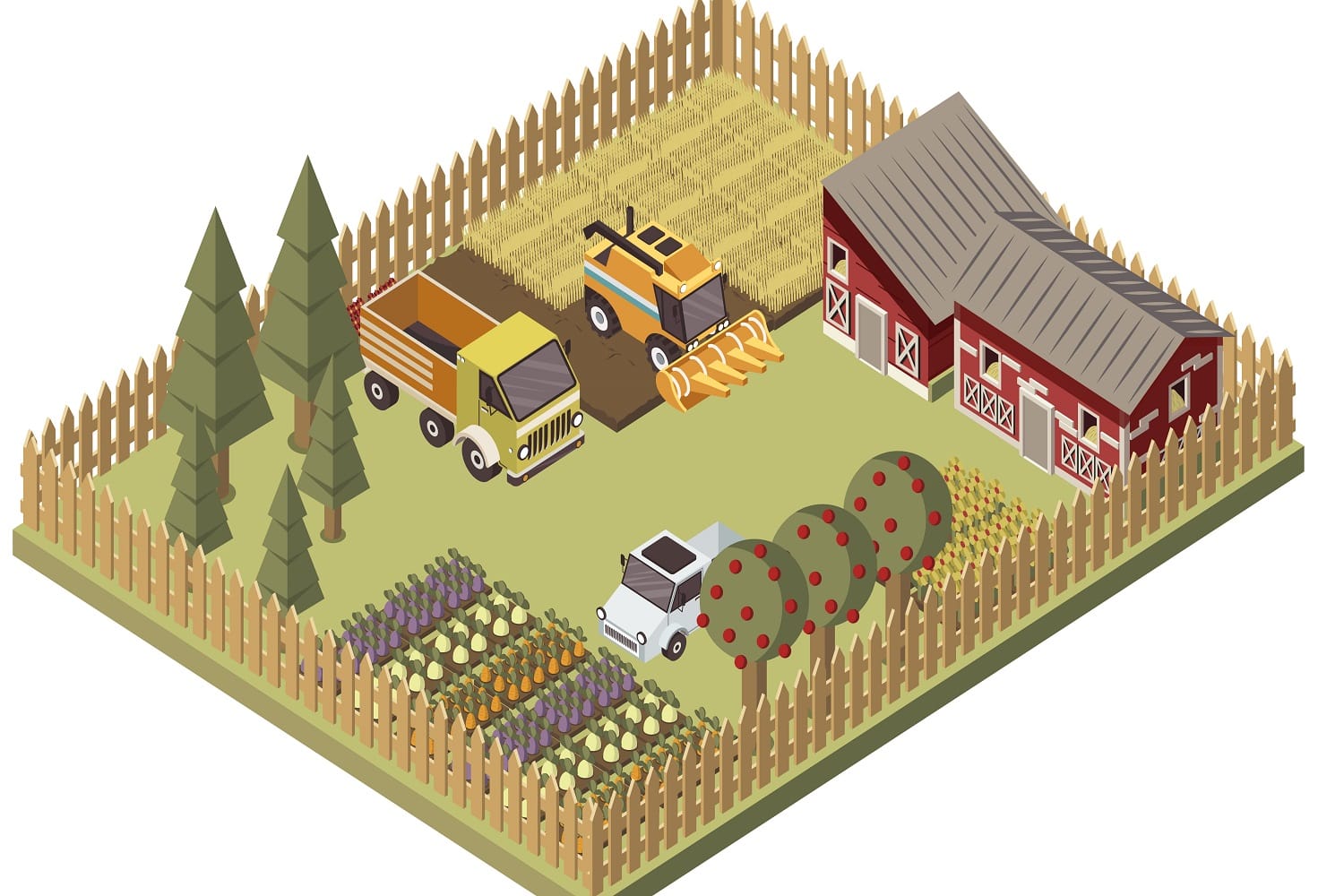


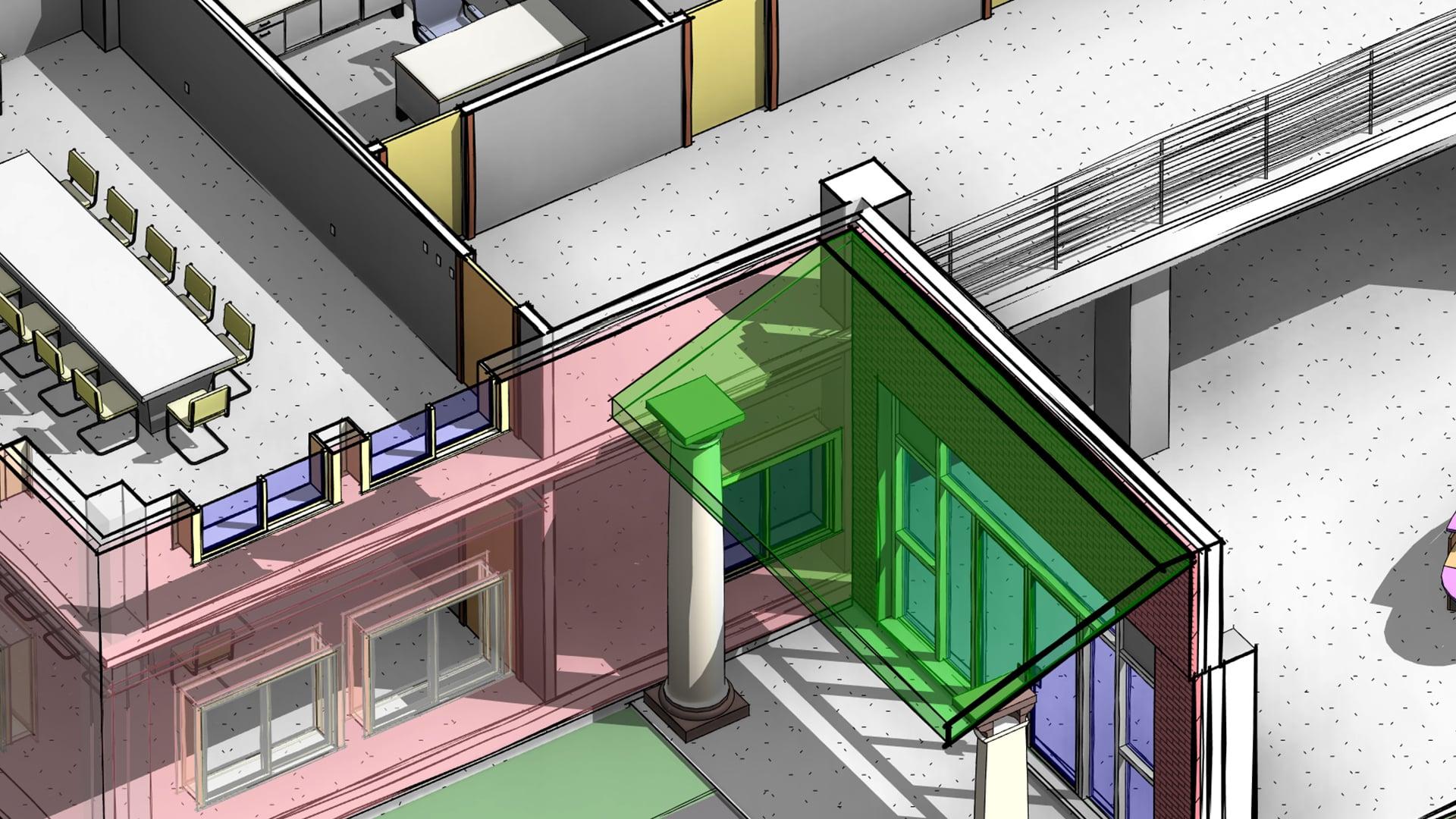









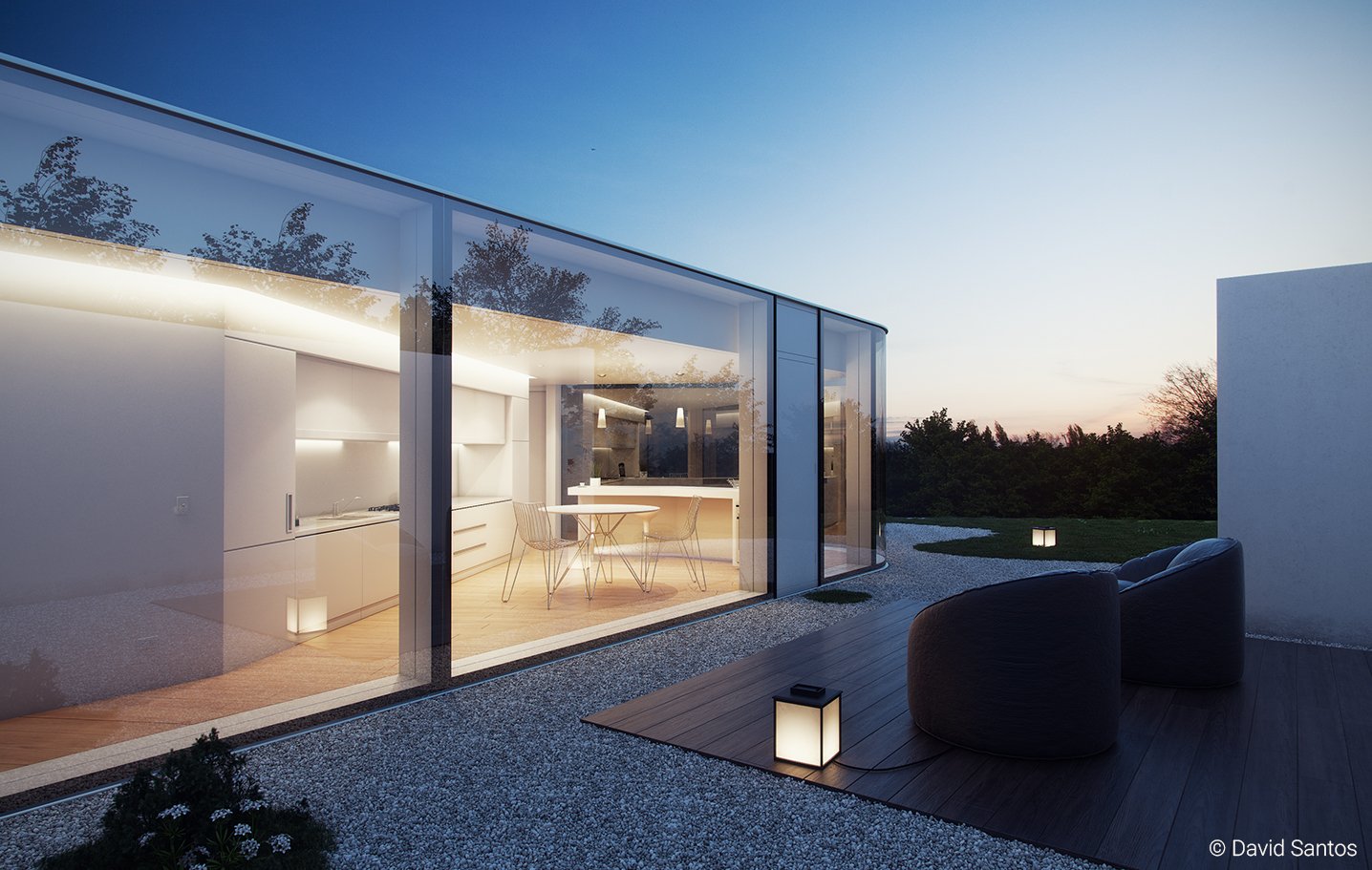

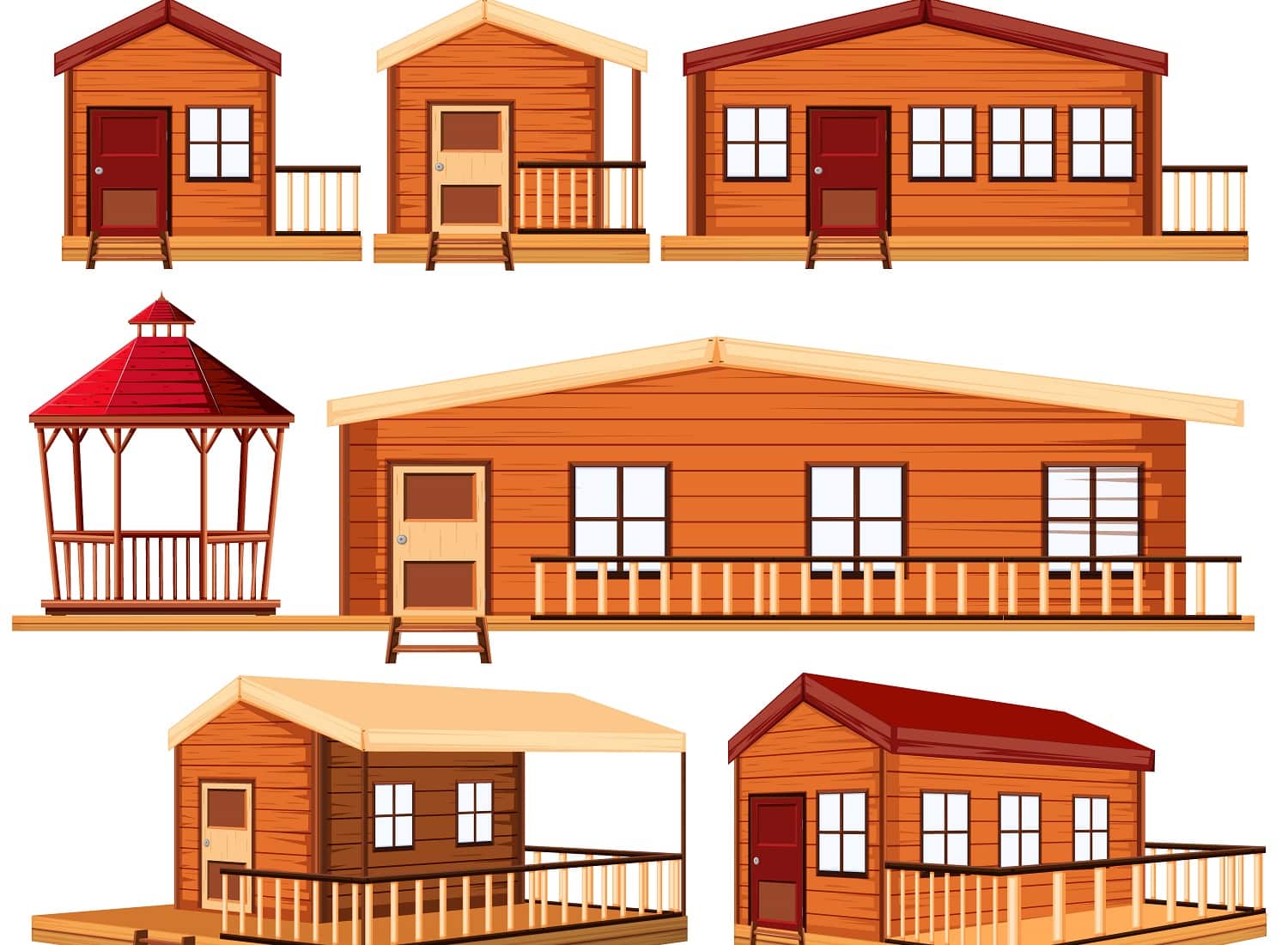

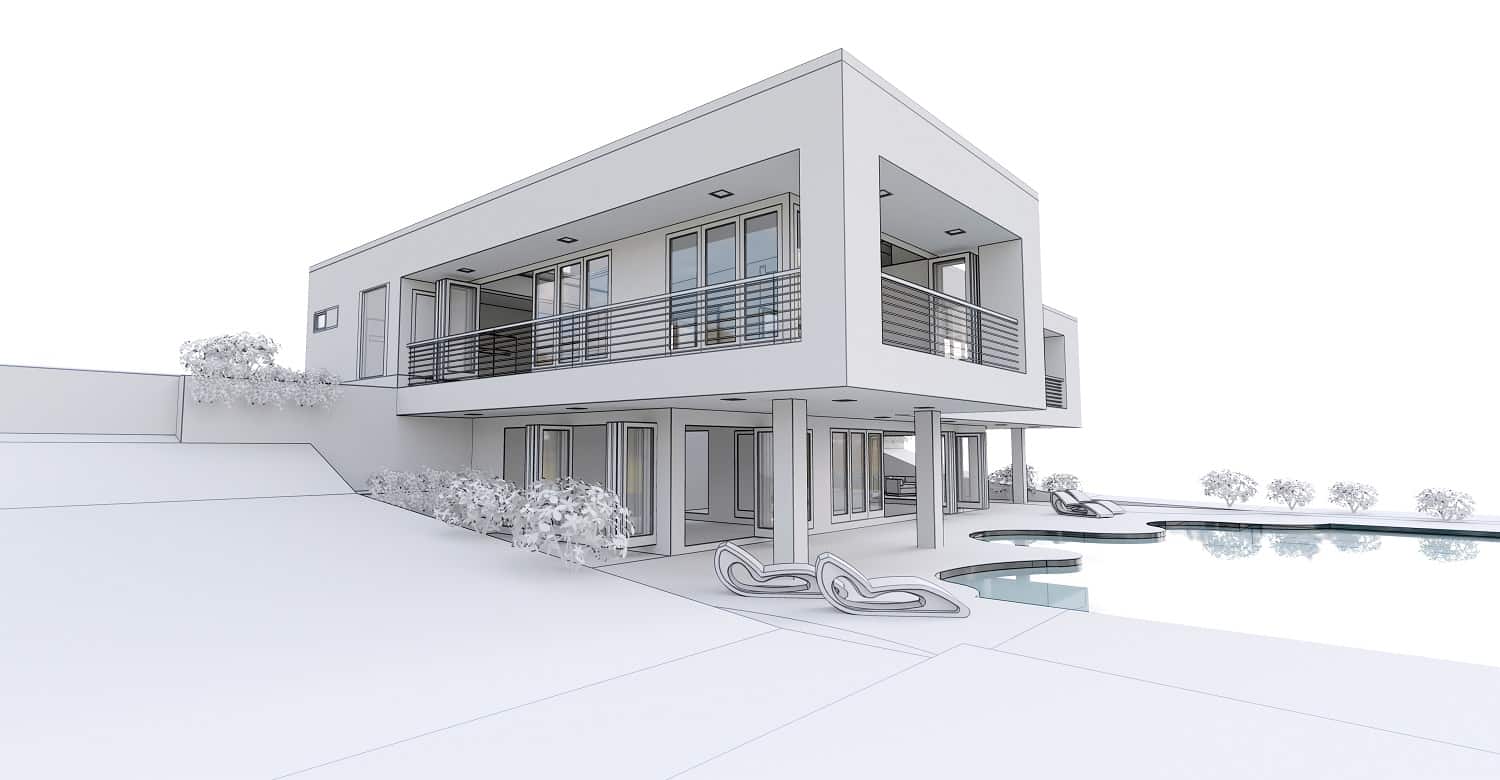
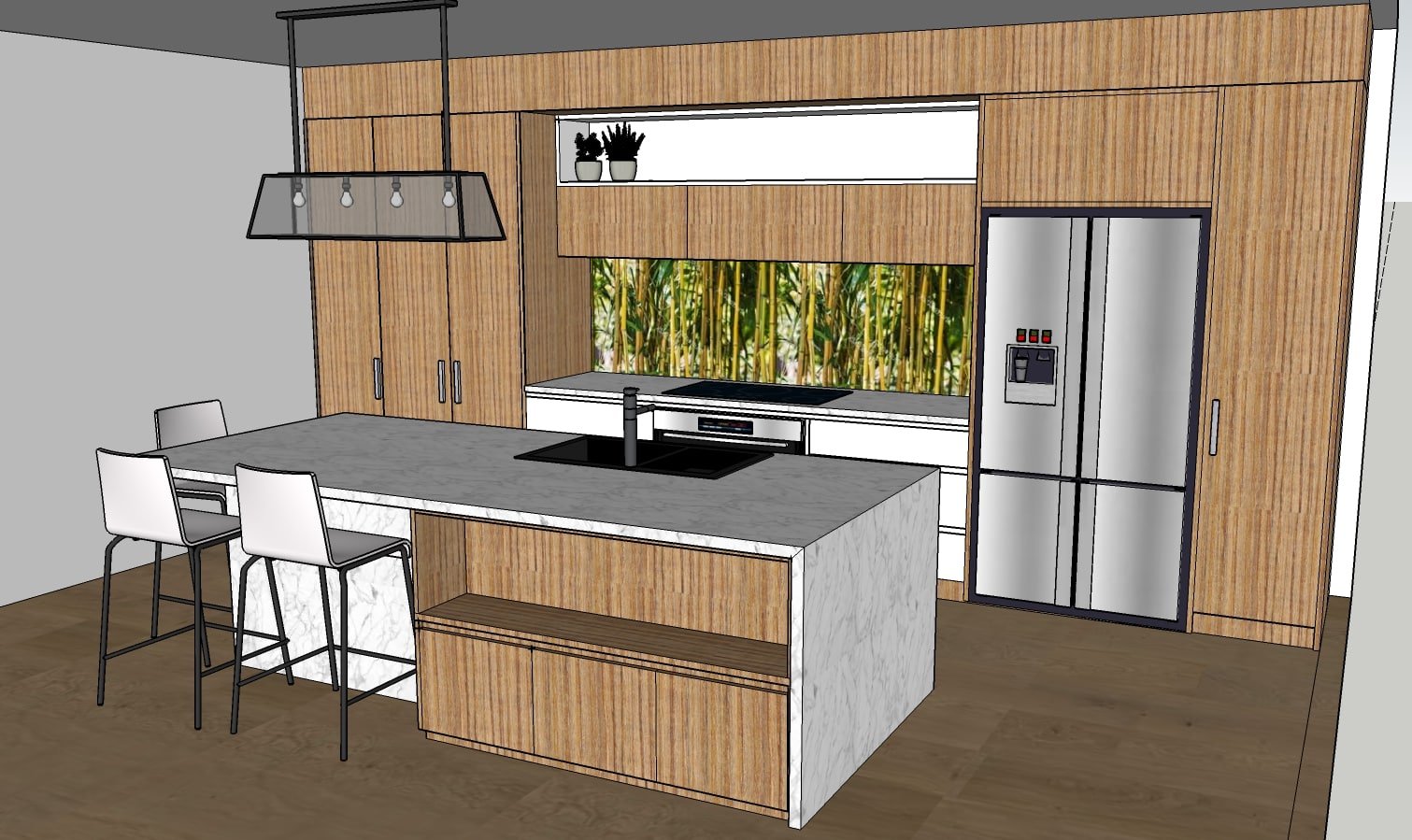
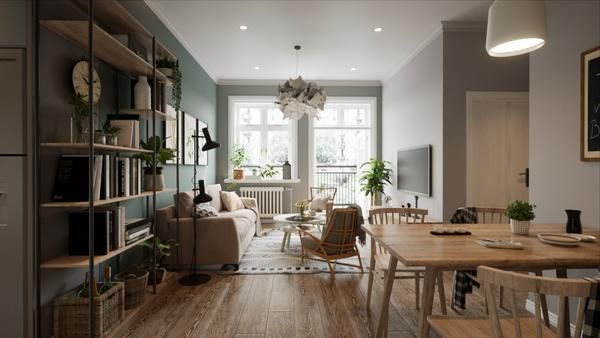

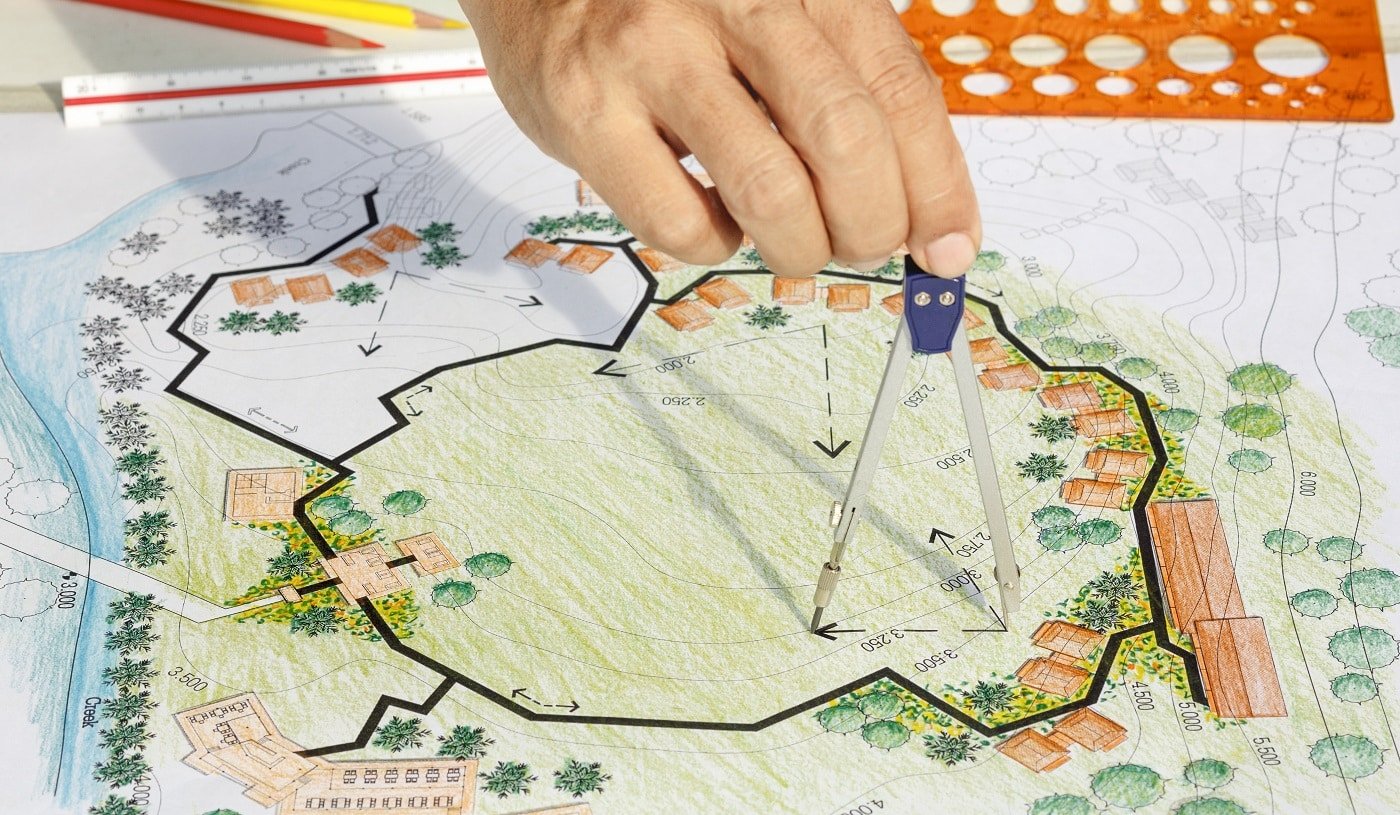
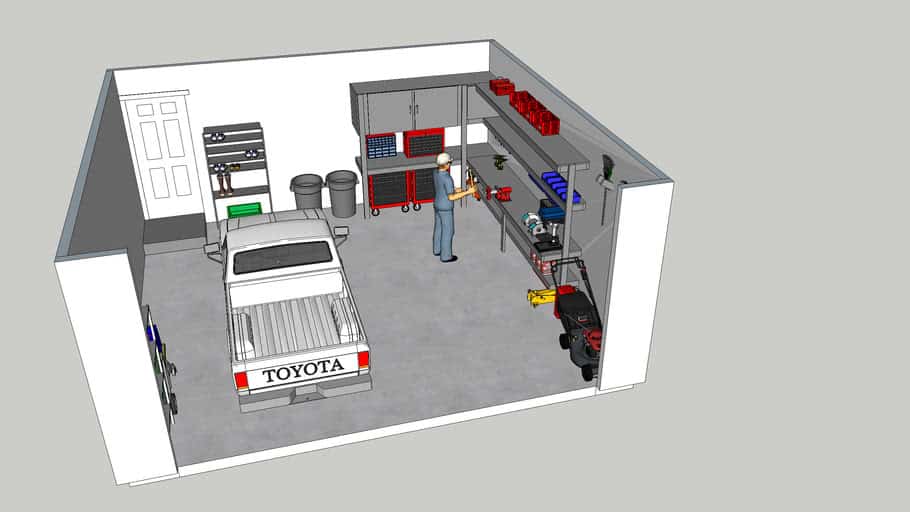
![17 Best Landscaping Design Software [Free &Amp;Amp; Paid] 50 17 best landscaping design software [free & paid]](https://www.architecturelab.net/wp-content/uploads/2020/12/Best-Landscaping-Design-Software-001.jpg)


